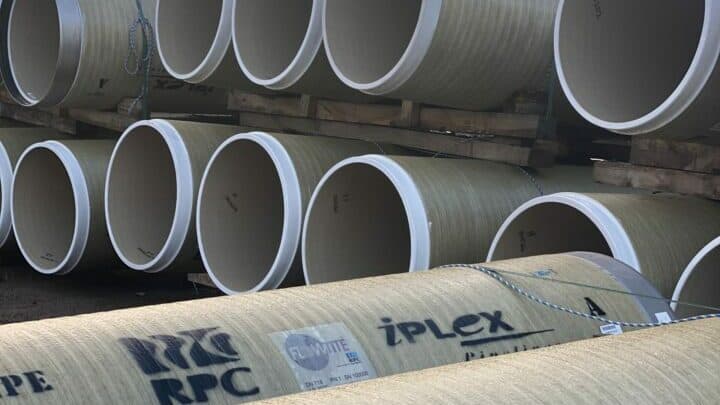Pipe selection can make or break a project so to speak; the wrong pipe can make a project more difficult to complete, increase time and costs, or at worst, fail, while the right pipe will help reduce risk, enhance accuracy, reduce cost and improve the overall success of installation. But with a number of pipe materials available, how do you know which one is right for your application? This will come down to a number of factors – some of which have a greater impact than others – including ground conditions along the route of the pipeline, method of installation, budget, application type, deadline and specifications such as diameter.
Clay pipes
Clay pipes are resistant to most chemicals, and ideally suited for areas where ground conditions are acidic or contaminated. As they are totally inert and rigid, they have high abrasion resistance, low friction coefficients and a high load carry capacity.
- Suited for: gravity flow sanitary sewers
- Not suited for: pressure applications
- Diameter availability: eight to 24 inches
- Design life: 200+ years
Ductile iron pipes
Ductile iron pipes have high dependability as they are ductile, strong, and impact and corrosion resistant, making them ideal for high pressure applications, as well as for pipelines that go under areas of extreme traffic loads, heavy backfill or earth movements.
- Suited for: gravity and pressure applications including potable water, slurry pumping, sewage and process chemicals applications
- Diameter availability: three to 64 inches
- Design life: Indefinite if properly designed and installed
High Density Polyethylene (HDPE) pipes
HDPE has good abrasion, corrosion and chemical resistance, but is limited in use where there are tight deadlines due to the need to string out the line to reduce installation time.
- Suited for: all underground utilities
- Not suited for: higher temperature or pressure applications
- Diameter availability: ¾ to 65 inches
- Design life: Minimum 100 years when properly designed, installed, inspected and operated
- Possible methods of installation: typically HDD is used as it requires a trail out trench which is detrimental to the shaft construction and overall keyhole pipeline advantages of microtunnelling. However, the AXIS laser guided boring system offers microtunnelling installations for HDPE pipes using a pullback method
Centrifugally cast glass fibre reinforced plastic (CC-GRP) pipes
CC-GRP pipes such as HOBAS have a number of cost saving benefits, including corrosion resistance, high stiffness, smooth interior surface and oversize interior diameter, and bottle-tight joints.
One of the key advantages is that they do not require a packing ring which is considered to be the weakest point of a jacking pipe.
They can be economically designed for both non-pressure and pressure services by varying the quantity, placement and orientation of the glass-fibre reinforcements, making them versatile and ideal for almost all large diameter corrosive applications.
- Suited for: potable water, force main or gravity sewers, and all applications where there is a corrosive carrier or external environment
- Diameter availability: 18 to 158 inches
- Design life: 100+ years
Polyvinyl Chloride (PVC) locked pipes
PVC is well known for its performance, but is typically limited to installation in areas with consistent, self-supporting ground or within a casing pipe as they are generally not suited to being installed via jacking.
There can be extra cost associated with these pipes as they have collars which require the use of centralisers to eliminate wear, and most contractors will recommend grouting the annulus to prevent pipe deflection from point loading.
- Suited for: potable water, reclaimed water, sewer force main, gravity sanitary sewer, and storm sewer pipe and fittings
- Not suited for: higher temperature or pressure applications
- Diameter availability: pressure pipe is available from four to 60 inches while gravity sewer pipe is available from three to 60 inches
- Design life: 100+ years when designed, installed and operated correctly
- Possible methods of installation: typically better suited for slip lining and HDD, but there are now limited options available that will allow jacking and pullback without collars which can increase the accuracy of installation and reduce risks
Steel pipes
Steel pipes have good strength, durability and elasticity, making them ideal for applications where high resistance to internal and external pressure is required. These characteristics also mean steel pipes can be installed using a number of methods including HDD, jack and bore, and pipe ramming.
- Suited for: water and wastewater, gas and oil, water well casing, pile driving and caisson sleeves
- Not suited for: chemical or corrosive service without internal or external protective coatings
- Diameter availability: pressure pipe is available from four to 60 inches while gravity sewer pipe is available from three to 60 inches
- Design life: 100+ years when designed, installed and operated correctly

